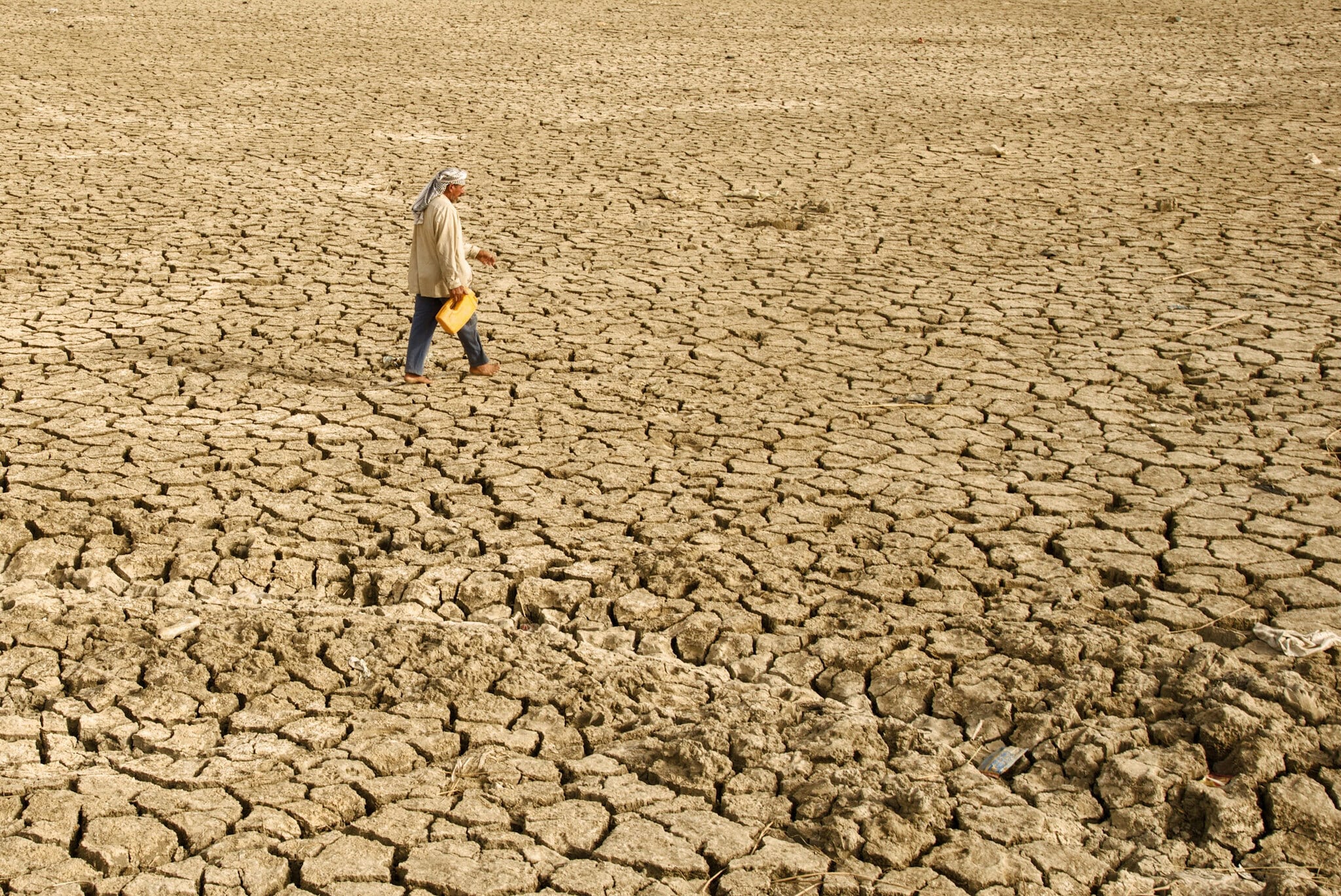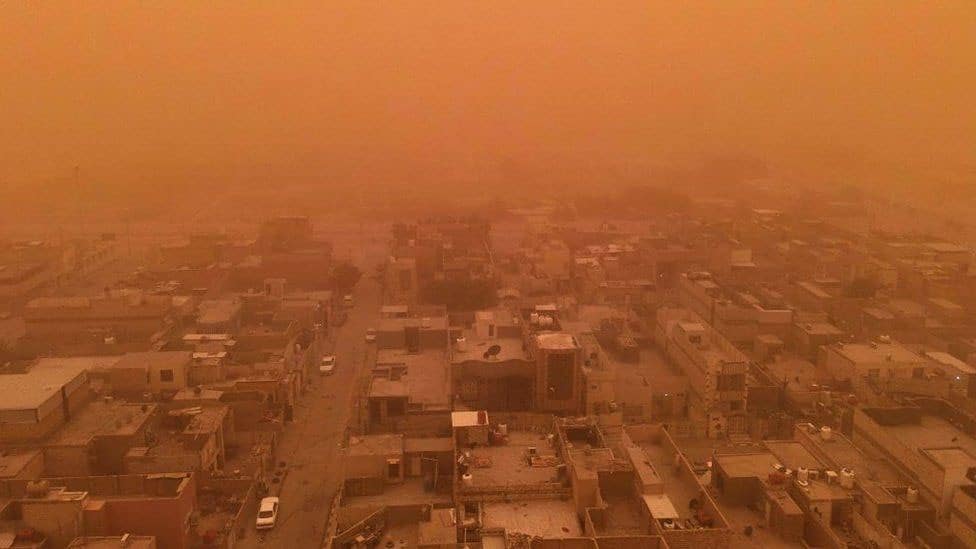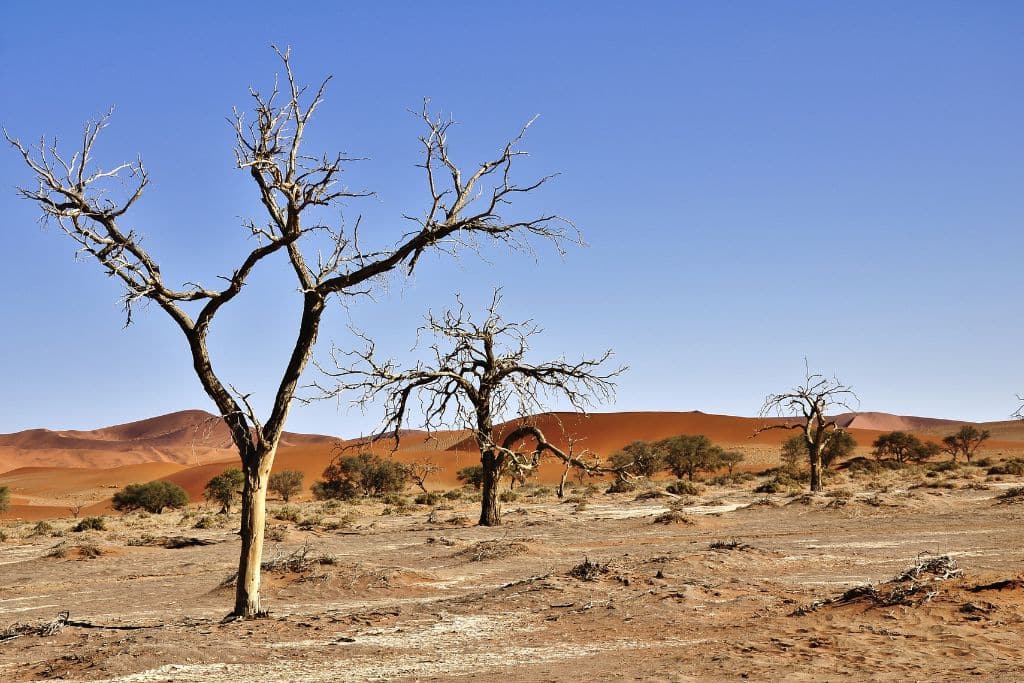In recent years, climate change has led to huge environmental, social, and economic issues in Iraq. The country has been battling with extreme flooding, droughts, and dust storms that damaged infrastructure and forced thousands of people to flee. While countless solutions have been explored, a brand-new, tree planting initiative has attracted media attention as both the government and local communities join forces to deliver a new mitigation strategy to save the country and its resources. The plan involves planting five million palms and trees.
—
Climate Change in Iraq
15% of Iraq’s total surface area is currently categorised as being in a state of desertification. The country is particularly vulnerable to the impacts of climate change because of its extensive oil reserves – with the fifth largest reserve in the world at over 140 billion barrels’ supply.
Iraq’s fragile social contract under an oil-led growth model has reportedly been a source of economic volatility and, according to the new World Bank Group’s Country Climate and Development Report (CCDR), the country faces the challenge of moving away from total oil dependence towards a more sustainable future. Without the capacity to achieve sustainable development, leaders will have to come up with costly, extensive projects.
For decades, Iraq has suffered from summer heatwaves, frequent droughts, and desertification triggered by intense dust storms – the duration and intensity of which are increasing due to global warming and increased vulnerability due to arid conditions almost all year round.
According to government figures, more than seven million citizens have been affected by climate change, with extreme weather events and natural disasters displacing hundreds of thousands of people who rely on agriculture and hunting for a living. Climate change has also impacted the physical environment in Iraq, as declining surface water reserves, recurring drought and increasing water salinity continue to contribute to large-scale desertification.
Projections of water availability in Iraq are highly uncertain under different climate change scenarios, which has huge implications for both human health and the natural environment.
Iraq is dominated by two famous rivers: the Tigris and the Euphrates, flowing southeast from the highlands in the north of the country to the Persian Gulf. Climate change threatens the future of these two major rivers, which supply much of Iraq with life-sustaining water supplies.

Iraq is particularly vulnerable to climate change due to its arid and semi-arid conditions. Photo by Abbas Raad/World Meteorological Organization (Flickr)
According to the United Nations, Iraq is one of the most vulnerable countries to climate shocks both in financial and physical terms. Not only have the environmental impacts of global warming had huge implications for the country’s natural resources; last year, dust storms swept across Baghdad – the country’s capital, forcing schools and airports to close. In addition to affecting the local economy, the dust triggered huge public health concerns as locals were instructed to stay indoors and medicine for those with respiratory problems to be kept handy.

Dust swept across Iraqi city, leaving dozens hospitalised. Photo by Felton Davis (Flickr)
Iraq’s Tree Planting Initiative
Trees help combat desertification, reduce soil erosion, and increase water availability, which is especially important in countries facing frequent droughts and water scarcity like Iraq. Tree planting is a great way to address desertification because trees play a critical role in preventing soil erosion and improving soil fertility. Desertification occurs when soil becomes degraded and unable to support plant life due to factors such as overgrazing, deforestation, and climate change.
Additionally, trees can help mitigate the impacts of climate change by absorbing carbon dioxide from the atmosphere. Trees are intended to help cool cities and provide a windbreak during dust storms.
Learn more about desertification here: Desertification: Causes, Effects, And Solutions
In March 2023, the country launched a national campaign to plant five million trees across the country. The initiative, supported by Prime Minister Mohammed Shia al-Sudani, aims at addressing the various environmental and socio-economic issues generated by climate change as well as creating green jobs and providing training and education to local communities on sustainable agricultural practices. The project has also attracted endorsement from several national and international organisations, including the United Nations Development Programme (UNDP) and the Food and Agriculture Organization (FAO).
The campaign involves a wide range of activities, such as planting seedlings, creating nurseries, and providing training and education to local communities. The initiative also focuses on creating green jobs and promoting sustainable agriculture practices.
The campaign is being carried out in several Iraqi provinces, including Baghdad, Basra, and Diyala. The planting of trees will be done by local farmers and citizens, with the support of technical experts and resources provided by the government and partner organisations.
Afforestation efforts have been implemented in other countries in the past. An example is the Great Green Wall of China project, which aimed to address aeolian desertification (caused by wind erosion), water and soil loss (caused by water erosion), and salinisation (caused by poor water management). By the time the project is due to be completed in 2050, approximately 88 million acres of forests will have been planted – and right now, the project is running ahead of schedule. Africa also has its Great Green Wall initiative, a project funded by the EU, the World Bank, and the United Nations. The plan is to plant a broad continuous band of trees covering 8,000 kilometres of land across the entire width of the Continent, from Senegal in West Africa to the Eastern Republic of Djibouti.
Conclusion
Although this initiative has attracted widespread media attention throughout the country and support from international organisations, the road ahead is long and there will be many setbacks.
Depending on the climate change scenario, temperatures in Iraq are likely to rise by up to 4.8C by 2080 compared to pre-industrial levels. Therefore, the trees selected to be planted would need to have the capability to survive through this level of heat, while also generating the benefits to soil quality to tackle erosion.
You might also like: The Great Green Wall Receives an Economic Boost, But Is It Enough to Save It?

















